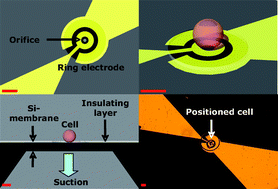Fully automated microchip system for the detection of quantal exocytosis from single and small ensembles of cells†
Abstract
A lab-on-a-chip device that enables positioning of single or small ensembles of cells on an aperture in close proximity to a mercaptopropionic acid (MPA) modified sensing


 Please wait while we load your content...
Please wait while we load your content...